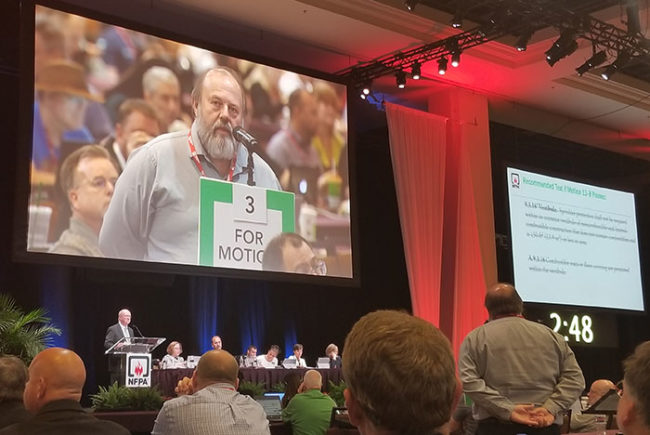Kaiser Permanente has banned the use of 13 antimicrobial chemicals and elements added to fabrics, furniture and finishes in its building projects going forward, according to an Oct. 13 bulletin. Officials of the health system, with 38 hospitals and 619 medical offices and outpatient facilities, state that this latest move is part of an overall mission to make its facilities healthier for patients and staff.
The decision, which follows a commitment Kaiser made last year to remove furniture containing toxic flame-retardent chemicals from its facilities, is not retroactive and affects only Kaiser’s future projects, and current construction and renovation projects that are not yet in the purchasing phase.
John Kouletsis, vice president for facilities planning and design at Kaiser Permanente, says the health system has informed the architects, general contractors and suppliers with whom it works that it will no longer purchase products and building materials that include fabric and finishes treated with antimicrobial additives.
Kaiser’s move to ban these antimicrobials takes its position on the matter a step further than its 2006 statement when it publicly acknowledged that it does not recommend the use of environmental surface finishes or fabrics that contain antimicrobial chemicals for the purpose of greater infection control. It reaffirmed that position in 2012.
Kouletsis says that in its research, the health system has found little evidence that the 13 items included on its ban list [see below] are actually effective infection prevention tools.
“We’ve been curious about antimicrobial chemicals for many years,” Kouletsis says. “My thought is that if there’s a nonchemical way to solve a problem, it seems as though that’s what you should look toward. So for us, we started looking within Kaiser and outside of Kaiser and asked: What does the infection prevention community think about all of this? When we talked with those inside of Kaiser, they said with a pretty loud voice that these additional chemicals do not provide the layer of protection that they claim, but proper terminal cleaning is the most effective means.”
Even so, Kouletsis says his team continued to question Kaiser’s infection prevention specialists on the issue, pointing out that antimicrobials are meant to work in concert with infection prevention best practices and not as a replacement. He says the infection prevention experts “held pretty fast” to their position.
Kaiser also sought out third-party research in its decision, such as studies from the Centers for Disease Control and Prevention that show there is no evidence to suggest that products with added antimicrobials can prevent disease.
Kouletsis says Kaiser is working with its architectural and general contracting community to define guidelines on how to specify materials for projects going forward and what type of questions they should be asking of product manufacturers.
The good news, Kouletsis says, is that in its preliminary conversations with architects, general contractors and vendors, his staff has found that most manufacturers already give the option whether or not to add antimicrobial properties to a product with little to no cost difference.
Kouletsis says Kaiser’s hope is to work with manufactures to provide even greater transparency in what chemicals and elements are being used in building materials and products and why.
Last year, the system committed to stop purchasing furniture that includes fire-retardent chemicals. He says the health system expected pushback but, instead, saw furniture manufacturers being willing to phase the chemical out of their products and continue their long-standing relationships with Kaiser.
“We look at this as an opportunity for us to be smarter about what we do about chemicals of concern, and as an opportunity to partner with architects, general contractors and vendors that manufacture these materials,” Kouletsis says.
Kaiser’s bulletin noted that copper-impregnated surfaces are not on the ban list. Kouletsis says that Kaiser neither endorses nor prohibits the use of copper in its facilities.
The 13 antimicrobials being banned are:
- Benzisothiazolin 3-one
- Didecyldimethylammonium chloride
- Diiodomethyl p-tolyl sulfone
- Hexamethylenetetramine
- Kathon 886 (CIT/MIT mixture)
- Methylchloroisothiazolinone (CIT, CMIT)
- Methylisothiazolinone (MIT)
- N-octadecyldimethyl [3-(trimethyoxsilyl) propyl] ammonium chloride
- Silver (nano)
- Silver sodium hydrogen zirconium phosphate
- Silver zinc zeolites
- Triclosan
- Zinc pyrithione





